How Traditional Art Shapes Modern Creativity and Keeps Culture Alive
Author:
GeorgeUpdated:
31.12.2024
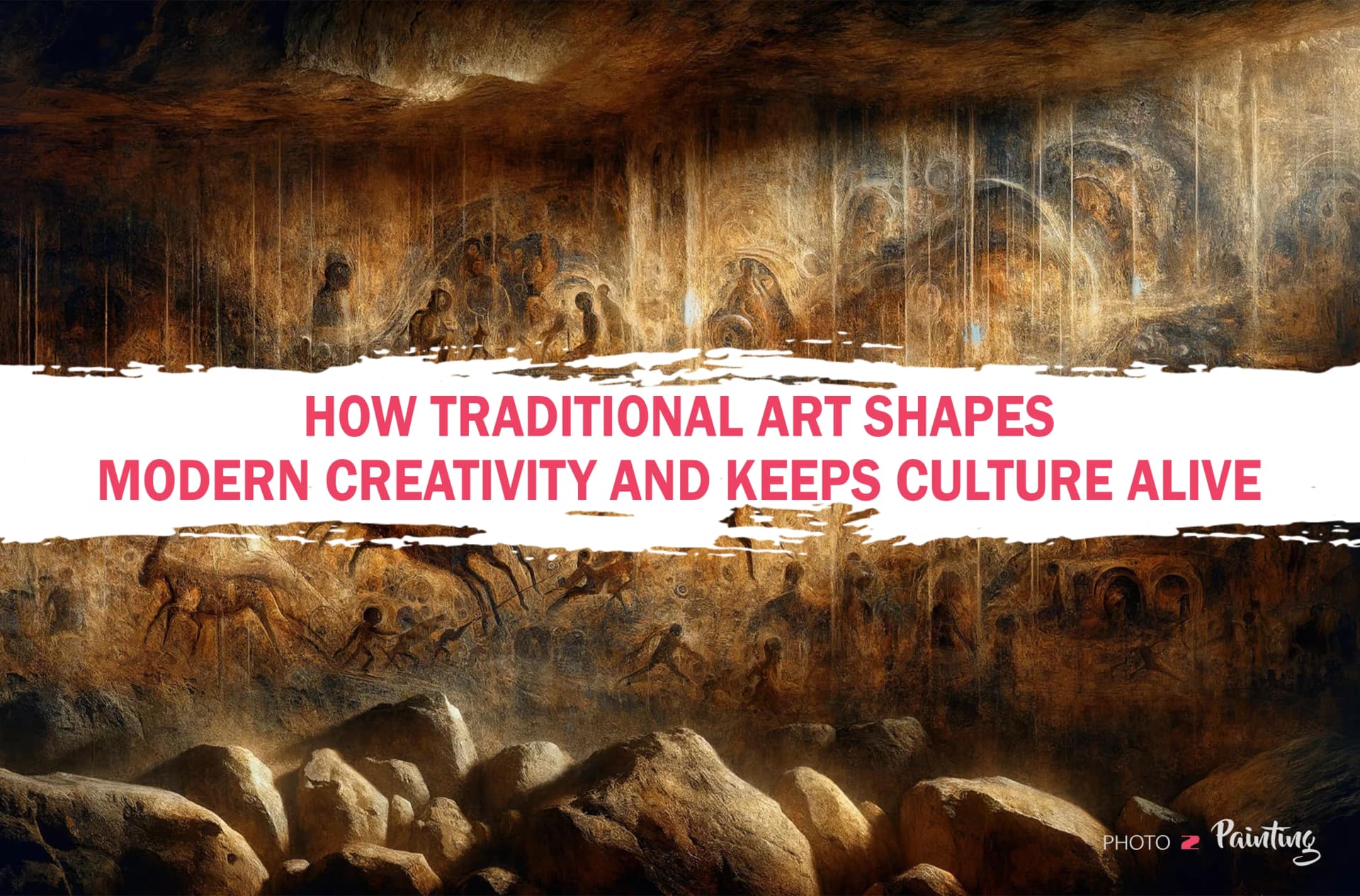

- Key Takeaways
- What Is Traditional Art?
- Traditional Art Mediums and Techniques
- 1.Visual Arts: Painting, Drawing, Sculpture
- 2.Decorative Arts: Pottery, Textiles, Jewelry
- 3.Performing Arts: Music, Dance, Theatre
- 1.
- Iconic Traditional Art Forms Around the World
- 4.Asian Calligraphy and Ceramics
- 5.African Tribal Masks
- 6.European Classical Paintings
- 7.Native American Pottery
- 4.
- Incorporating Traditional Art into Modern Art Practices
- 8.Influence on Contemporary Artists
- 9.How Traditional Art Techniques Inspire Modern Creations
- 10.Artistic Movements Rooted in Traditional Art
- 8.
- Digital Art as an Extension of Traditional Art
- 11.How Artists Use Traditional Techniques in Digital Media
- 12.Examples of Digital Works Inspired by Traditional Styles
- 13.Bridging Traditional and Digital Worlds
- 11.
- The Role of Traditional Art in Modern Society
- 14.Cultural Preservation and Education
- 15.Traditional Art in Museums and Exhibitions
- 16.Artisan Communities and Local Economies
- 14.
- Challenges in Preserving Traditional Art
- 17.Globalization and Cultural Shifts
- 18.Supporting Artisans and Cultural Institutions
- 19.Technological Efforts to Archive and Document Art
- 17.
In today’s world, it’s getting harder to tell the difference between art made by humans and art created by AI. Because of this, people often forget how special traditional art really is. Traditional art isn’t just beautiful—it holds the history, skills, and stories of the people who made it. As technology grows, we risk losing this important connection to our roots. Traditional art reminds us of the creativity and meaning that have shaped human expression for centuries.
As Gustav Mahler wisely said:
"Tradition is not the worship of ashes, but the preservation of fire."
Imagine a world where the creativity and ideas of people from the past are forgotten. Even if art isn’t something you think about every day, it’s amazing to see how people used it to express themselves. They told stories, showed their beliefs, and even reacted to politics in ways words couldn’t. The beautiful designs of calligraphy, the bold shapes of tribal masks, or the careful crafting of pottery are just a few examples of how art brought people closer to their emotions and identities. Today, we have new tools and ways to express ourselves, but traditional art reminds us where it all began and connects us to the stories that unite cultures across time.
In this blog, we’ll explore the meaning and core characteristics of traditional art, its role in society, and its influence on modern art. We’ll take a closer look at iconic art forms around the world and see how ancient techniques inspire contemporary artists. By the end, you’ll see why preserving traditional art is essential—not just for history, but for the future of creativity itself.
Key Takeaways
Traditional art keeps history and culture alive.
It inspires modern artists with old techniques and ideas.
Art tells stories about beliefs, traditions, and daily life.
Preserving art is important for future generations.
Traditional art connects people across cultures.
It uses natural, eco-friendly materials like clay and dyes.
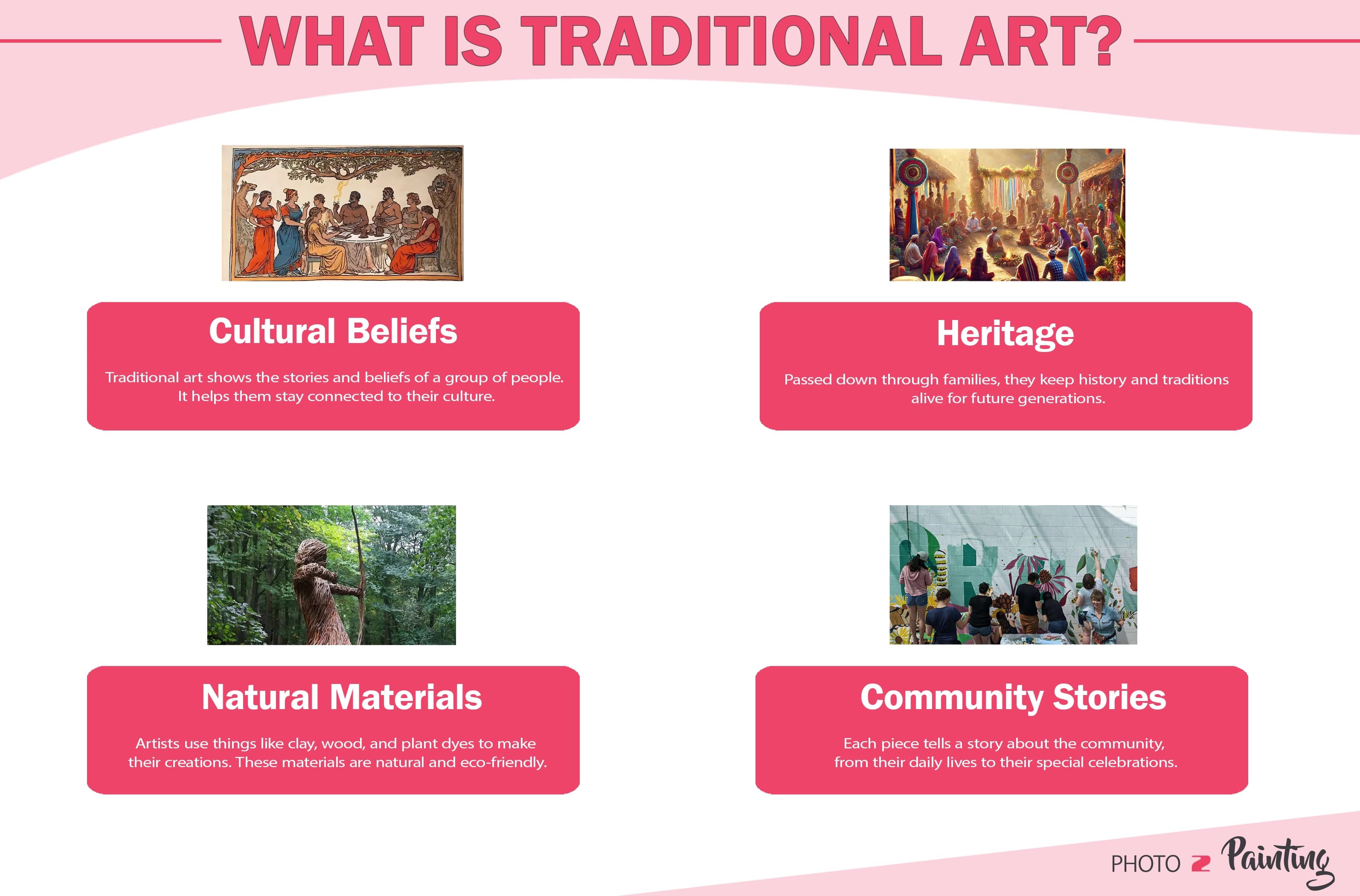
What Is Traditional Art?
Traditional art is a creative expression deeply rooted in cultural heritage and passed down through generations. It reflects the beliefs, values, and customs of a community, while it also serves as a mirror of their identity and history. Traditional art is made using special techniques created over time and often uses natural materials like wood, clay, or fibers. Each piece has a purpose, whether it tells a story, represents spiritual beliefs, or celebrates important events in a community’s life.
Traditional art, more than just aesthetic works, plays an important role in society. It preserves cultural stories, rituals, and values, acting as a bridge between generations. These art forms are often tied to important ceremonies and daily life. It provides a sense of identity and continuity. By keeping traditional art alive, we honor its rich heritage. We also inspire future generations. The past helps shape and enhance creativity in the present and future.
Traditional Art Mediums and Techniques
Traditional art is made using many different methods and materials. Each technique reflects the culture it comes from and is often passed down through families or communities. These methods use natural materials and show the skills and creativity of the people who make them.
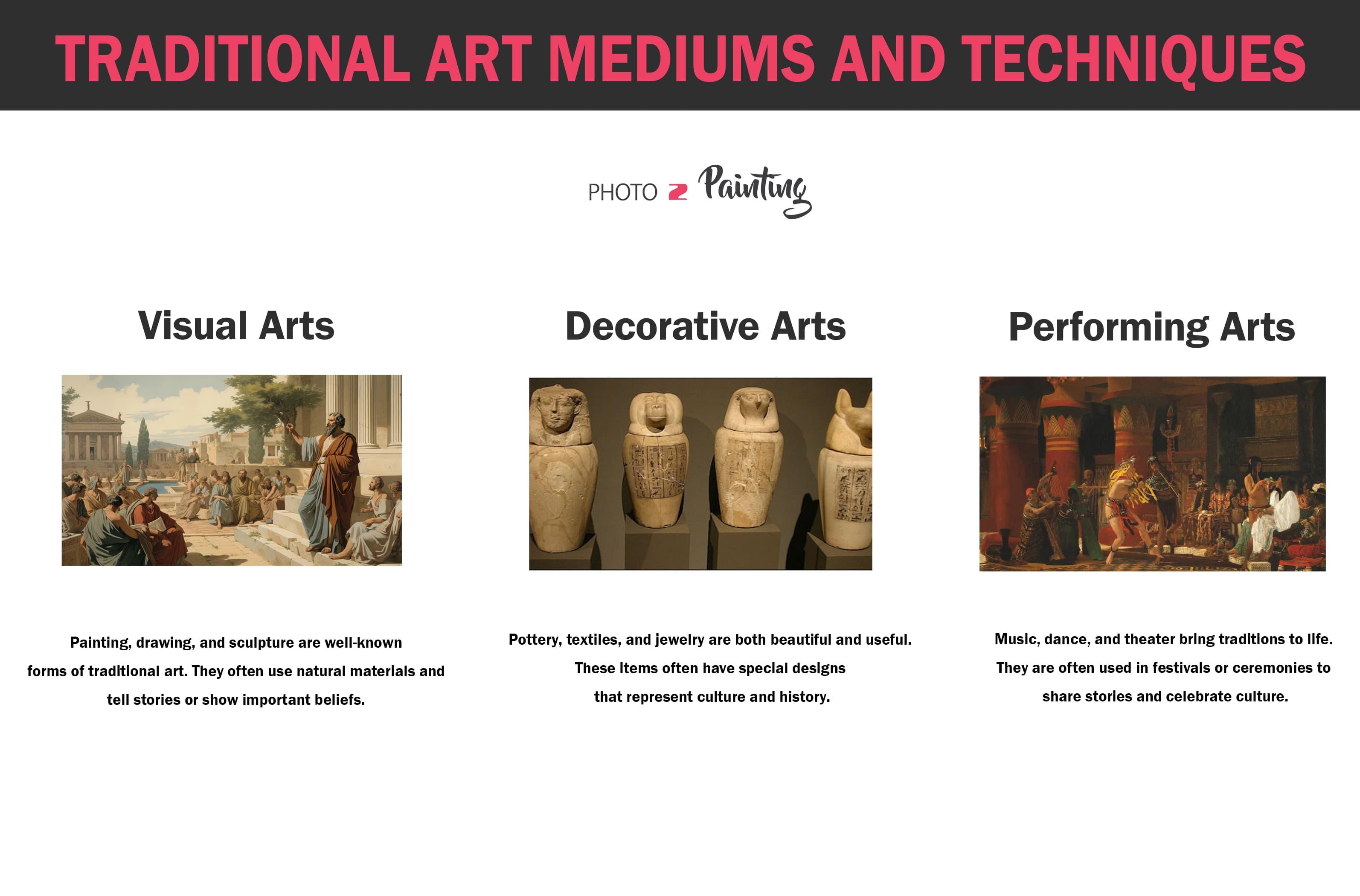
Visual Arts: Painting, Drawing, Sculpture
Visual arts include painting, drawing, and sculpture, which are some of the most familiar forms of traditional art. Paintings and drawings often use natural colors made from plants or minerals, with handmade tools like brushes or sticks. They tell stories, share history, or show beliefs important to the artist’s culture. Art also captures deep emotions, as seen in famous sad paintings that continue to move people across generations.Sculptures are made by carving stone, wood, or shaping metal, and they often have deep religious or cultural meanings. From statues in temples to masks used in ceremonies, these visual arts capture the spirit of the community.
Decorative Arts: Pottery, Textiles, Jewelry
Decorative arts are beautiful objects that also have practical uses. Pottery, for example, is made by shaping clay into bowls, vases, or other items and decorating them with unique patterns. Textiles are cloth or fabrics created through weaving, dyeing, or embroidery. They often show designs that tell a story or celebrate special occasions. Jewelry, made from metals, beads, or natural materials, isn’t just for decoration—it often has cultural or religious meaning, like showing a person’s status or marking important life events.
Performing Arts: Music, Dance, Theatre
Performing arts bring traditions to life through music, dance, and theater. Traditional music uses instruments like drums, flutes, or stringed tools that are handmade and unique to each culture. Dance is performed during festivals, ceremonies, or special events, using movements, costumes, and rhythms that express cultural identity. Theatre combines music, acting, and storytelling to teach lessons, share history, or celebrate beliefs.
These forms of traditional art are more than just beautiful—they help keep cultures alive, teach their history, and show the world their creativity. They remind us of the importance of tradition in our lives and how it connects us to our roots.
Iconic Traditional Art Forms Around the World
Traditional art looks different all around the world, but every piece tells a story about the culture it comes from. Here are some famous examples of traditional art from different regions.
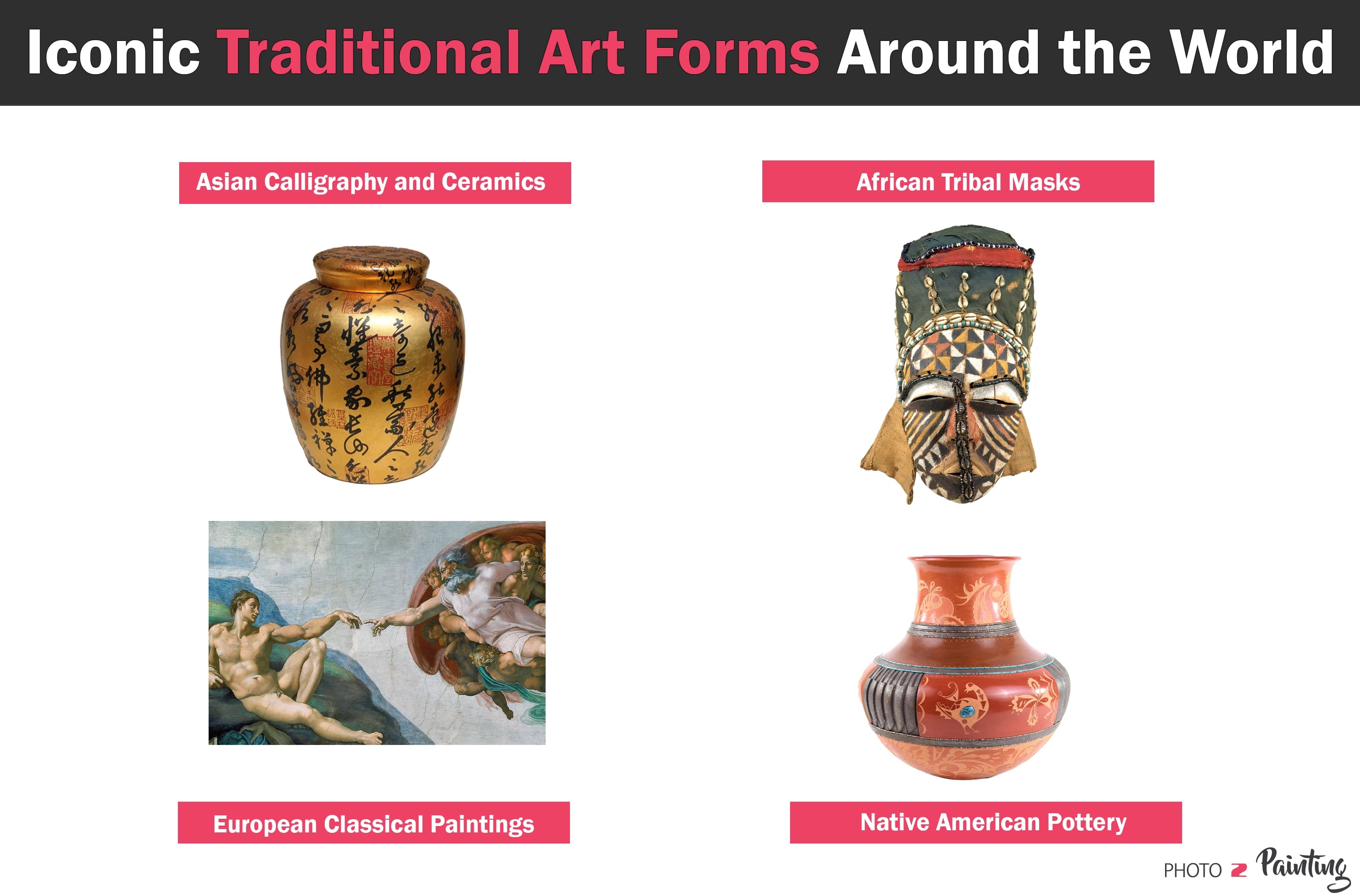
Asian Calligraphy and Ceramics
In Asia, calligraphy is more than just writing—it’s a special art form. Artists use brushes and ink to create beautiful characters with flowing strokes. Each line has meaning and shows the artist’s skill and focus. Ceramics, like Chinese porcelain or Japanese tea sets, are another well-known tradition. These handmade pieces are decorated with detailed designs and are both useful and artistic.
African Tribal Masks
African tribal masks are important symbols in many cultures. They are made from materials like wood, metal, or fabric and are often used in ceremonies and dances. Each mask has a unique design that represents spirits, ancestors, or cultural stories. The bold patterns and bright colors make them stand out, but they also hold deep meanings connected to the community’s beliefs.
European Classical Paintings
Europe is famous for its classical paintings, especially from the Renaissance and Baroque periods. Artists like Leonardo da Vinci and Michelangelo created detailed works that often showed religious stories, history, or portraits. These paintings used techniques like shading and perspective to make them look realistic and emotional. They are still celebrated today for their beauty and skill.
Native American Pottery
Native American pottery is both practical and artistic. Made from local clay, the pots are shaped by hand, painted with natural colors, and fired in a kiln. Many pieces have designs or symbols that tell stories about nature, animals, or cultural beliefs. Pottery was used for everyday things like storing food and water, but it also showed the creativity and traditions of the people who made it.
These traditional art forms show how different cultures use art to tell their stories, express their beliefs, and pass down traditions. Each one is a reminder of the beauty and history that connect people across the world.
Incorporating Traditional Art into Modern Art Practices
Traditional art still influences modern art in many ways. Artists today often look to old styles and techniques for ideas, combining them with new tools and methods. This creates art that connects the past with the present.
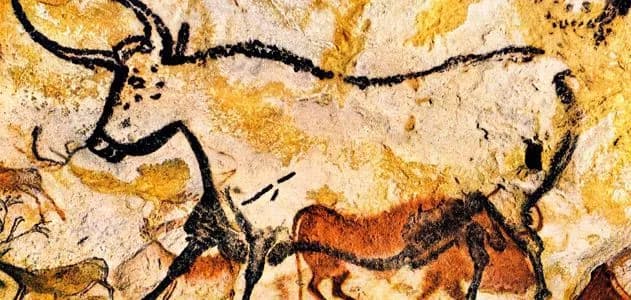
Influence on Contemporary Artists
Modern artists frequently draw ideas from traditional art. They study the patterns, colors, and techniques used by past artists to learn how these elements told stories or expressed emotions. These connections allow artists to bring a sense of history and depth to their work while giving it a modern interpretation. Traditional art also helps artists explore cultural identity, honoring their roots while presenting them in a way that speaks to today’s audiences. This influence can be seen in various ways:
Patterns and Motifs
Artists incorporate traditional symbols or designs into modern works. For example, painters may use tribal patterns in their canvases, while graphic designers reimagine ancient motifs in logos or digital art.
Storytelling
Traditional narratives inspire modern forms like films, animations, or public art installations. These stories preserve cultural heritage while connecting with today’s audiences through relatable themes.
Cultural Revival
Many artists use traditional art forms to reconnect with their roots, celebrating their heritage in modern interpretations. This can include reviving forgotten techniques or highlighting cultural milestones in their work.
Material Use
Traditional artists often used natural, sustainable materials like plant dyes, clay, or woven fibers. Modern artists embrace these eco-friendly practices, blending them with contemporary materials to create environmentally conscious works.
By blending these influences, contemporary artists ensure that traditional art remains a main part of modern creativity. It bridges the gap between history and innovation.
How Traditional Art Techniques Inspire Modern Creations
The techniques used in traditional art continue to inspire new ways of creating. Artists adapt these methods to suit modern tastes and tools, connecting the past with the present. These adaptations can be seen in various creative fields where traditional techniques are reimagined for modern audiences, such as.
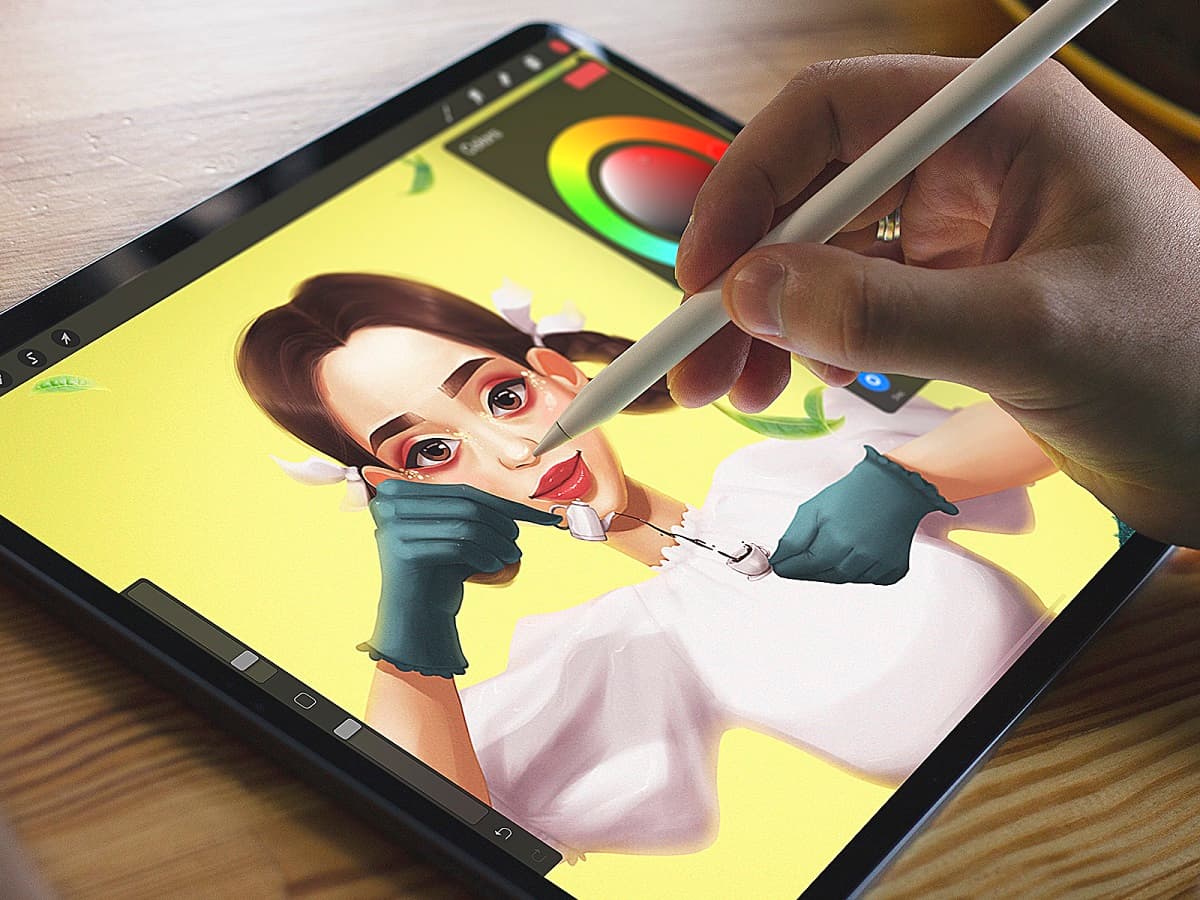
Pottery Techniques
Artists still use traditional methods like wheel-throwing and hand-molding but mix them with modern styles. They might shape clay into minimalist designs or decorate it with abstract patterns. These pieces, such as sleek vases or colorful tableware, combine the charm of old techniques with modern aesthetics, making them popular in today’s homes.
Calligraphy
Calligraphy, practiced for centuries in cultures like Chinese, Arabic, and Japanese, is now often mixed with modern art styles. Artists use traditional brush techniques to create posters, digital fonts, or even street murals. This brings the beauty of handwritten art into digital spaces and urban settings, keeping it fresh and exciting for today’s audiences.
Weaving and Embroidery
Weaving and embroidery, once mainly used for clothing or blankets, are now common in modern fashion and home design. High-end fashion designers use traditional patterns in dresses and jackets, giving their work a cultural and handmade feel. In home décor, handwoven rugs or embroidered wall art bring warmth and tradition into modern interiors. These crafts show how old techniques can add value and meaning to everyday items.
Digital Art
Many digital artists use software to copy traditional techniques, such as brushstrokes or textures. Programs like Photoshop or Procreate help create art that looks like oil paintings or watercolors without using physical materials. Digital art is often used for animations or virtual galleries, making it easier to share traditional styles with a global audience.
Custom Painting
Artists use traditional painting methods to create unique, personalized works for clients. These pieces often include special symbols, memories, or cultural designs that hold meaning for the buyer. For example, an artist might paint a family portrait in a traditional style or add historic patterns to make it extra special. Custom paintings keep old techniques alive while adapting them to modern needs.
Traditional art is not just about preserving history; it’s about exploring its potential in today’s creative world. By finding new ways to use old techniques, artists bring cultural richness into everyday life. This evolution keeps traditional art meaningful and ensures its place in both our present and future.
Artistic Movements Rooted in Traditional Art
Many artistic movements throughout history have drawn directly from traditional art. The Arts and Crafts Movement of the 19th century focused on reviving handmade craftsmanship, inspired by the traditional techniques of medieval artisans. Similarly, modern art movements like Abstract Expressionism or Minimalism often borrow from the simplicity and symbolism found in traditional art forms. For example, Aboriginal art from Australia has influenced abstract patterns in contemporary works, and African tribal art has inspired modern sculpture and painting styles.
Today, many artists revisit traditional art to address themes like environmentalism, cultural preservation, and identity. By using old techniques or symbols in their work, they remind audiences of the importance of history and the lessons it teaches us. This ongoing dialogue between traditional and modern art shows how deeply connected the two are and how tradition can inspire new creative possibilities.
By blending traditional and modern practices, art becomes a way to keep traditions alive while also pushing creative boundaries. This mix ensures that cultural heritage continues to influence and inspire the future of art.
Digital Art as an Extension of Traditional Art
The rise of digital art has brought new ways to use traditional art techniques while adding modern creativity. By blending old methods with digital tools, artists create works that honor the past and explore new possibilities.

How Artists Use Traditional Techniques in Digital Media
Traditional art techniques inspire many digital creations. Artists use technology to recreate or build on old methods in exciting new ways.
Digital Painting
Programs like Procreate or Photoshop allow artists to paint digitally. This makes their work look like oil paints, watercolors, or ink drawings. Artists can use tools to create textures like canvas or paper, giving their digital work the feel of traditional art. It also lets them fix mistakes or experiment with colors easily, something harder to do with real materials.
Patterns and Textures
Traditional weaving and embroidery designs are scanned or drawn into digital programs to be used in clothing, home decorations, or ads. Designers can also adjust colors and shapes to make these patterns more modern while keeping their cultural meaning.
3D Sculpting
Digital sculpting tools like Blender let artists create virtual versions of traditional carvings or pottery. These models look just like real sculptures and can even be printed with 3D printers to bring them to life. This allows traditional styles to be shared worldwide without needing physical resources.
Calligraphy in Digital Typography
Artists use digital pens to create fonts and graphics inspired by traditional calligraphy. This style is used in posters, logos, and social media, keeping the beauty of calligraphy alive in modern designs.
Interactive Storytelling
Traditional art styles, like shadow puppets or frescoes, are animated and used in apps, games, or videos. This adds motion to these classic art forms and makes them more exciting for younger audiences.
These tools allow artists to expand on traditional methods while making their work easier to share and edit.
Examples of Digital Works Inspired by Traditional Styles
Digital tools help artists reimagine traditional art styles. Here are some ways traditional styles are brought to life through digital media.
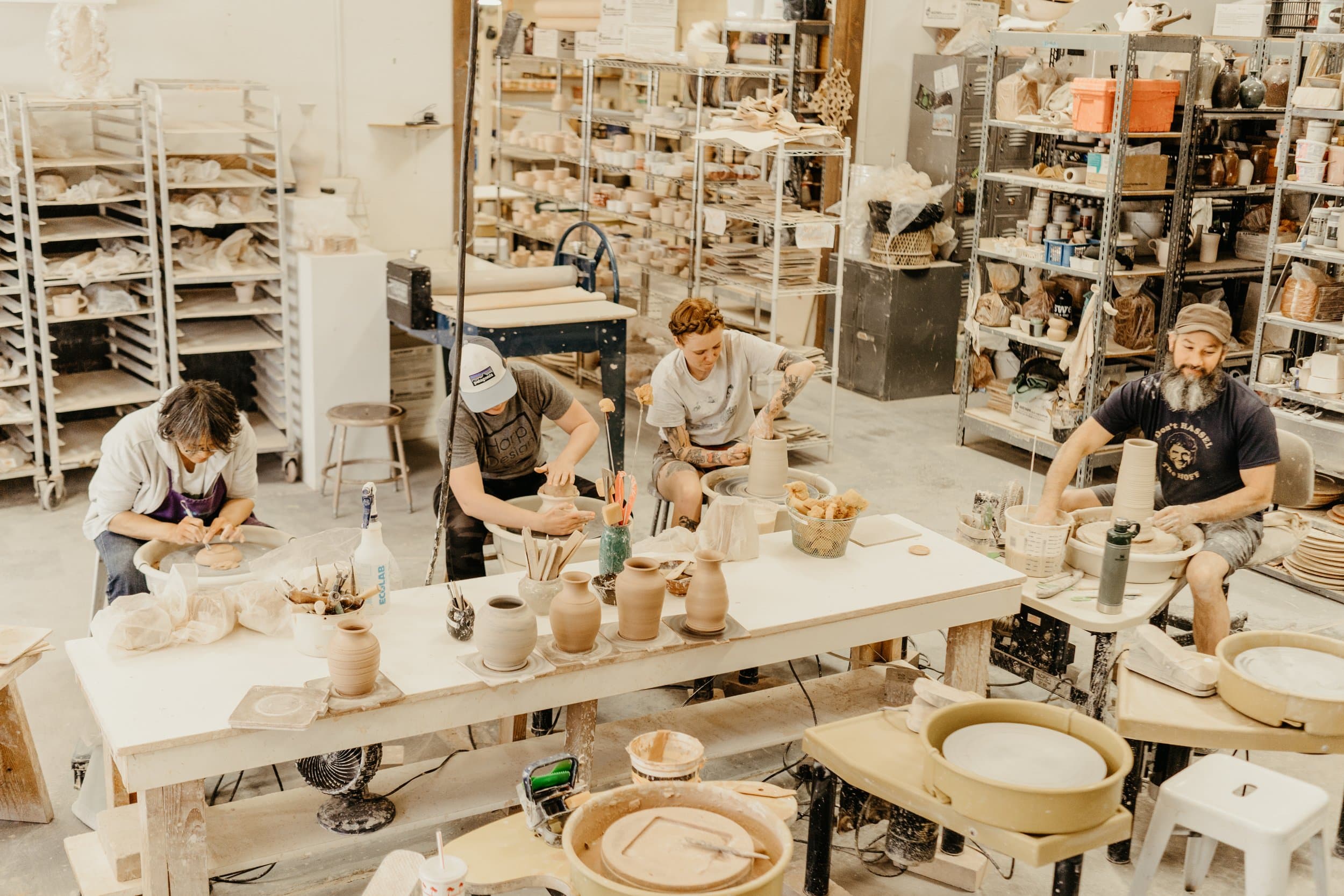
Mandala Animations
Traditional mandalas are recreated digitally, using bright colors and moving designs. These animations are calming and often used in meditation apps, making this ancient art form more engaging.
Japanese Woodblock in Digital Prints
Artists use software to create modern versions of Japanese woodblock prints, combining their bold outlines with today’s themes like city life or pop culture. These works keep the style of ukiyo-e alive while giving it a modern twist.
AR Tribal Patterns
Tribal designs are brought to life through augmented reality (AR), which allows people to project patterns onto real-life objects like walls or clothes. This technology makes traditional patterns interactive and fun to explore.
Virtual Pottery Studios
Programs let people create pottery digitally, shaping clay and adding designs virtually. These creations can even be printed in 3D, bringing digital pots into the real world. This is a great way for people to try pottery without needing a real studio.
Games like Okami and Never Alone use traditional art styles and cultural stories to create immersive experiences. These games teach players about different traditions while letting them enjoy the art and storytelling in an interactive way.
These examples show how traditional art can grow and adapt through digital tools, making it more accessible to new audiences.
Bridging Traditional and Digital Worlds
Digital art doesn’t replace traditional art—it connects the past to the present, creating new ways for people to experience cultural heritage.
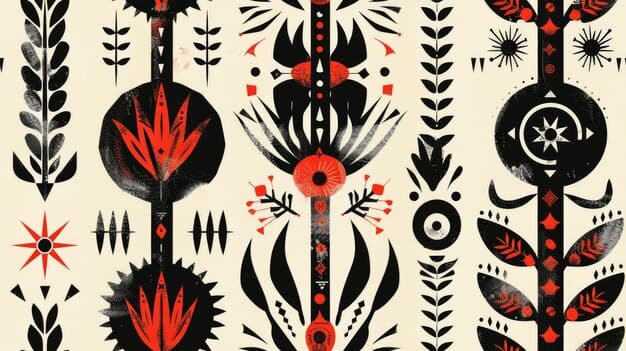
Preservation of Culture
High-resolution scans and 3D models help save traditional artworks so they aren’t lost, even if the originals fade or break. These digital versions allow people to study and enjoy them for years to come. Museums and researchers use this technology to keep traditions alive.
Global Sharing
Online platforms, virtual museums, and social media make traditional art easy to share with people all over the world. Virtual tours and interactive exhibits let audiences experience traditional art from their homes. This makes it more inclusive and accessible.
New Collaborations
Traditional artists work with digital creators to combine their skills and create unique art. For example, a potter might team up with a digital designer to make 3D models of their pottery for online displays or sales. These collaborations give traditional art a fresh platform.
Interactive Education
Digital tools help teach people about traditional art through apps, videos, and virtual workshops. Students can “paint” mandalas or “sculpt” clay pots digitally, learning the process while keeping traditions alive.
By combining traditional techniques with digital tools, artists are keeping cultural heritage alive while exploring the future of creativity. This mix makes sure that the beauty and lessons of traditional art continue to inspire new generations.
The Role of Traditional Art in Modern Society
Traditional art is an important part of modern life because it helps preserve culture, teaches people about their history, supports local communities, and adapts to changes in the world. It connects the past to the present and continues to inspire people today.
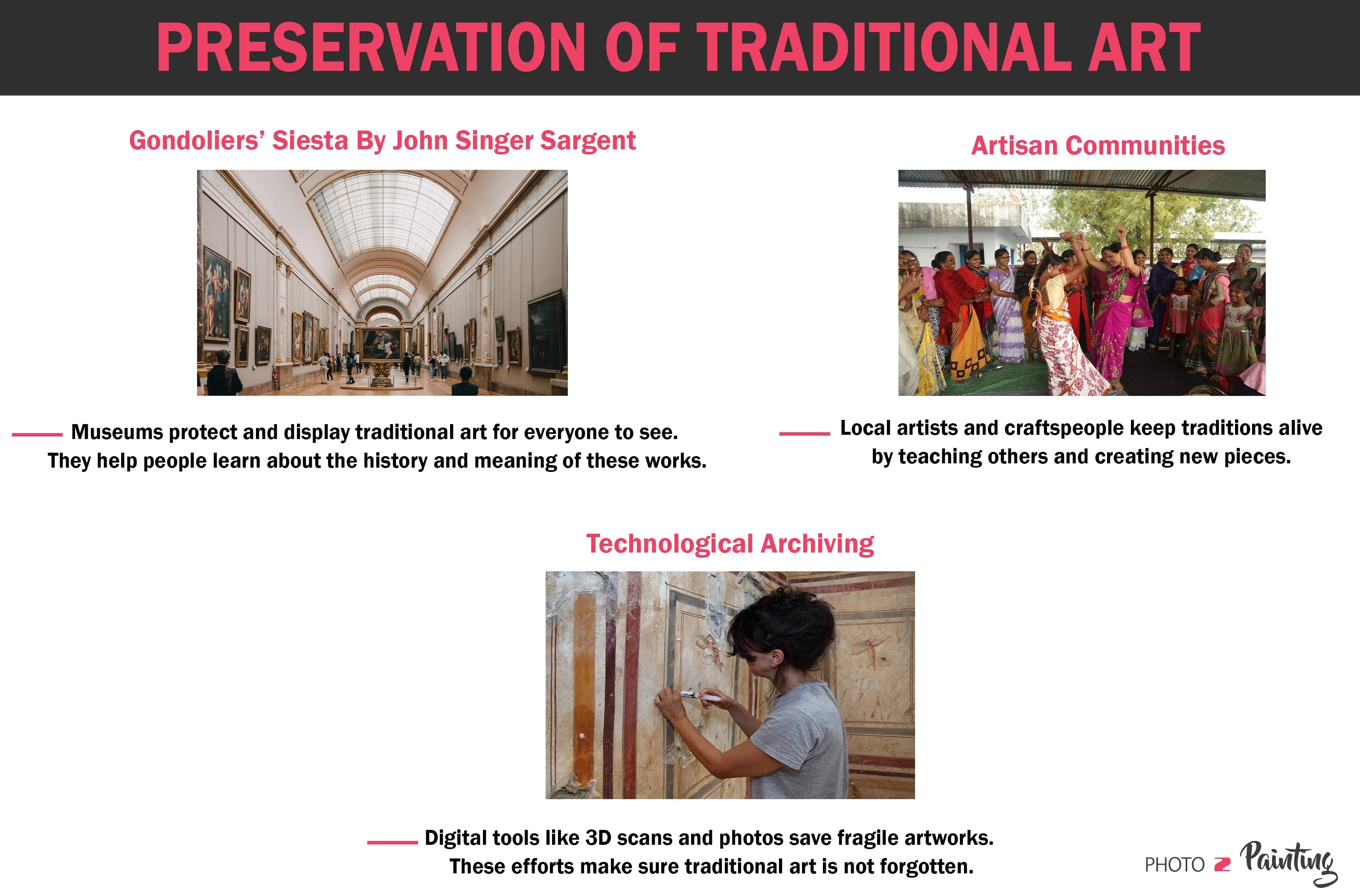
Cultural Preservation and Education
Traditional art helps keep the stories, beliefs, and traditions of cultures alive. It shows how people lived in the past and teaches new generations about their history. Schools and community programs use traditional art to help kids learn about their heritage and take pride in their culture. Workshops often teach people skills like pottery, weaving, or painting to make sure these traditions don’t disappear. Learning about traditional art also helps people understand the value of their culture and appreciate its influence.
Traditional Art in Museums and Exhibitions
Museums and exhibitions protect and share traditional art with the world. They display paintings, carvings, textiles, and other crafts that tell the story of different cultures. Some traditional artworks are among the most valuable paintings. This shows the lasting appreciation and significance of these creations. Some museums now use virtual reality or interactive displays to let people experience traditional art in new ways. Traveling exhibitions bring these artworks to more places, helping people from different backgrounds learn about each other. Museums also teach visitors about why these art forms are important and what they mean to the cultures they come from.
Artisan Communities and Local Economies
Traditional art is important for supporting artisans and local economies. Many craftspeople rely on their skills to earn money. They make items like pottery, jewelry, or fabrics. These goods are often sold at markets or online, attracting tourists and collectors. Artisan cooperatives help craftspeople work together, share their knowledge, and reach more buyers. Supporting these communities not only helps them make a living but also keeps their skills and traditions alive for the future.
Challenges in Preserving Traditional Art
Traditional art is facing many problems in the modern world. Changes like globalization, new technology, and modern lifestyles make it harder to keep these traditions going.
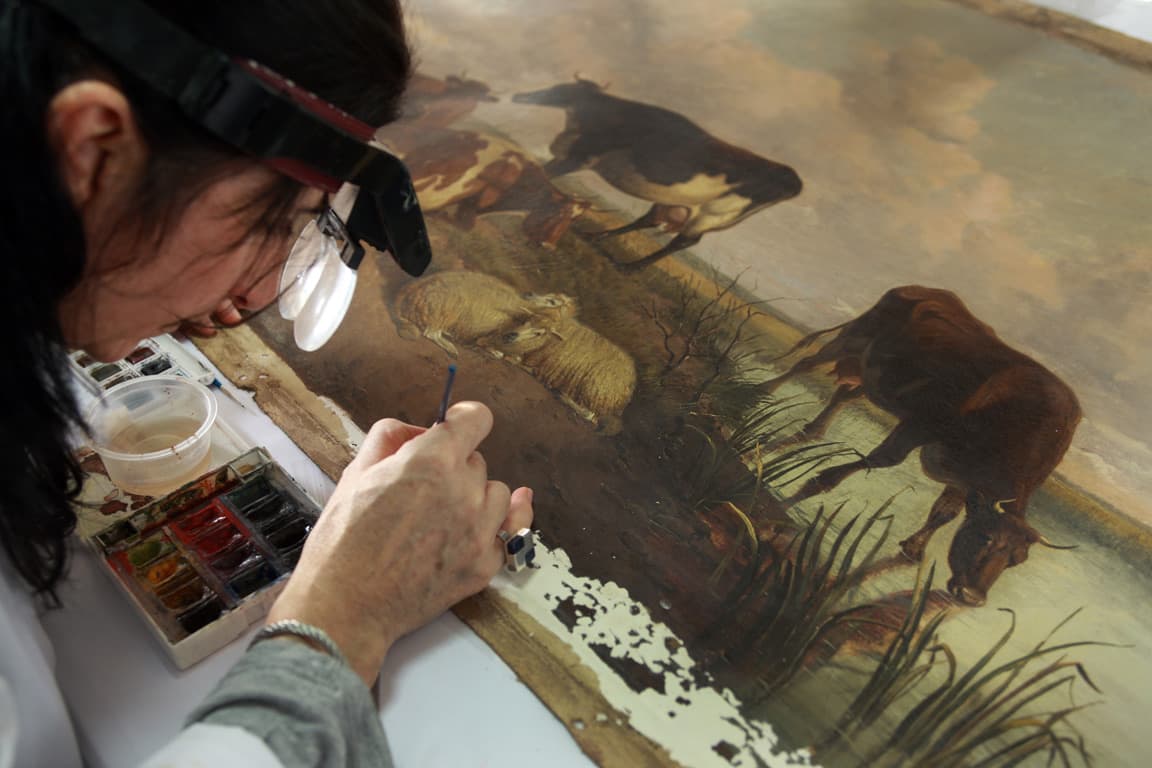
Globalization and Cultural Shifts
Globalization has brought cultures closer, but it has also caused some traditional practices to fade. Many young people leave their villages for jobs in cities and don’t learn the skills their parents and grandparents used. Handmade crafts also have to compete with cheap, mass-produced items. Traditional art has to adapt to these changes to survive while keeping its cultural identity.
Supporting Artisans and Cultural Institutions
Artisans and cultural organizations need help to preserve traditional art. Governments and non-profits can support them by providing money for workshops, festivals, and training programs. Fair trade programs can ensure that artisans are paid fairly for their work, making it worth their time to continue their craft. By helping artisans and cultural institutions, society can protect these art forms and keep them alive.
Technological Efforts to Archive and Document Art
Technology helps save traditional art so it isn’t forgotten. High-quality photos, 3D scans, and digital archives keep records of fragile items that could be lost over time. Virtual reality and other tools let people experience traditional art in new and exciting ways. These efforts ensure that even if the physical pieces change or disappear, their beauty and meaning will be preserved for future generations.
Traditional art plays an important role in keeping cultures alive, teaching people about their past, and helping local communities. By addressing these challenges and using modern tools, we can ensure that traditional art continues to inspire future generations.
Conclusion
Traditional art is more than just beautiful creations; it is a main part of our culture, history, and identity. It carries the stories, values, and skills of generations. It connects us to the past while inspiring the future.
As Anselm Kiefer wisely said:
"Tradition is a dialogue with the past."
By keeping traditional art alive, we continue this dialogue, learning from history and honoring our heritage.
Balancing tradition and innovation is key to preserving traditional art in a modern world. While we embrace new technologies and creative methods, it’s essential to respect and protect the techniques and meanings of traditional art. This balance allows us to celebrate cultural roots while exploring fresh possibilities while also ensuring that tradition continues to thrive in harmony with modern creativity.
The responsibility lies with all of us—artists, educators, and communities—to preserve, support, and evolve traditional art. By doing so, we safeguard its beauty and significance for future generations. It creates a world where both tradition and innovation can flourish side by side.
Frequently Asked Questions
What is another name for traditional art?
Traditional art is often referred to as "classic art" or "folk art," depending on its style and origin.
What makes traditional art different from modern art?
Traditional art typically follows time-honored techniques and themes, while modern art explores new ideas, mediums, and forms of expression.
Why do people still prefer traditional art?
Many people prefer traditional art because it connects them to cultural heritage, history, and timeless craftsmanship.
What are examples of traditional art?
Examples include Native American pottery, African tribal masks, Asian calligraphy, and European classical paintings.
How has traditional art influenced modern artistic practices?
Modern artists often take inspiration from traditional patterns, techniques, and materials to create innovative works.
Is photography considered traditional art?
No, photography is not typically considered traditional art, but some argue it can become traditional when it follows older photographic techniques.
George, CEO of Photo2painting, is a passionate art lover and entrepreneur. He founded Photo2painting.com from scratch, inspired by his artist friends. As the company's CMO, he manages content and marketing.
Excellent Customer Reviews















































































































































